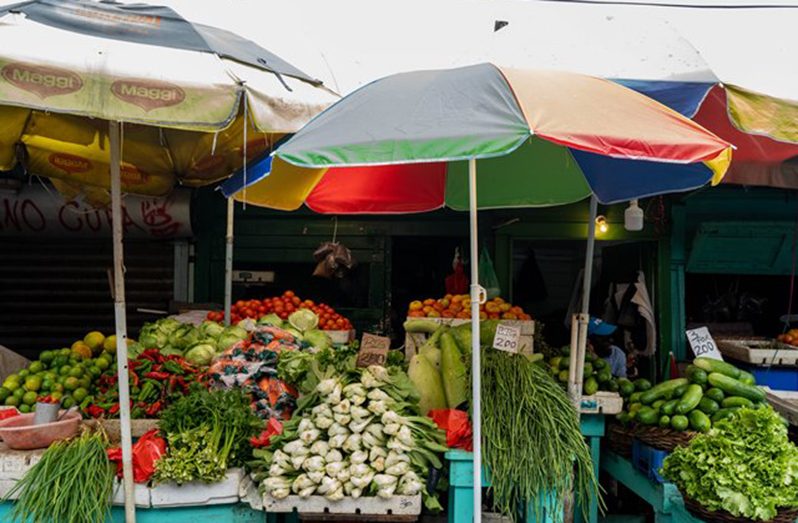AVERAGE market prices over the three-week period, January 4 to 24, 2023, for selected livestock and non-traditional agricultural commodities, projected by the Guyana Marketing Corporation (GMC), show an easing in prices at some of the major markets across the country.
The GMC carried out checks at Kumaka, Anna Regina, Parika, Vreed-en-Hoop, Diamond, Stabroek, Bourda, Mon Repos, Mackenzie, Rosignol, and Skeldon markets.
Price checks on beef saw a reduction of 20 per cent in Regions One and Six, while in Region 10, the price of beef decreased on average by 11 per cent for the corresponding period.
In addition, the price for pork again was reduced by 20 per cent in Region One, while in Region Ten it was 14 per cent lower and 29 per cent lower in Region Six.
Meanwhile, chicken notably was reduced by 26 per cent in Region Four; 30 per cent in Region One, and 20 per cent in Region Six.
Staple produce such as cassava, eddoes, plantains, potatoes, and yams remain unchanged or have reduced significantly at the markets.
Notably, seasonal vegetables such as bora saw a 43 per cent reduction in cost per bundle on average compared to what it was in December 2022.
Overall other vegetables remained under $500 per parcel and/or lb; for example, cabbage is four per cent less, while pumpkin dropped by eight per cent and carrots by five per cent respectively at the various markets.
In the recent 2023 budget presentation government allocated $2 billion towards food security as it moves ahead with plans to increase food production to become a regional food hub.
In addition, $200 million has been earmarked for innovative agriculture that will improve food production – a correlation can be drawn that improved food production is having a marked positive impact on price reduction at the markets.
Guyanese can look forward to the continuation of this stable trend as farmers encounter more favourable weather conditions and improved policy execution in the coming months, which is expected to incentivise production.
In 2022, food production received some $38 billion which saw an increase in climate-smart agriculture, as well as an increase in agro-processing facilities and training.
Moreover, food security continues to be a paramount policy initiative for the Government of Guyana, which holds lead responsibility for agriculture, agricultural diversification, and food security in CARICOM – spearheading the regional body’s quest to reduce its food import bill by 25 per cent by 2025.
According to the World Bank: “Guyana’s economy is expanding at an extraordinary rate, and is expected to remain one of the world’s fastest-growing economies in the medium term.”




.png)









